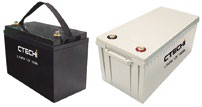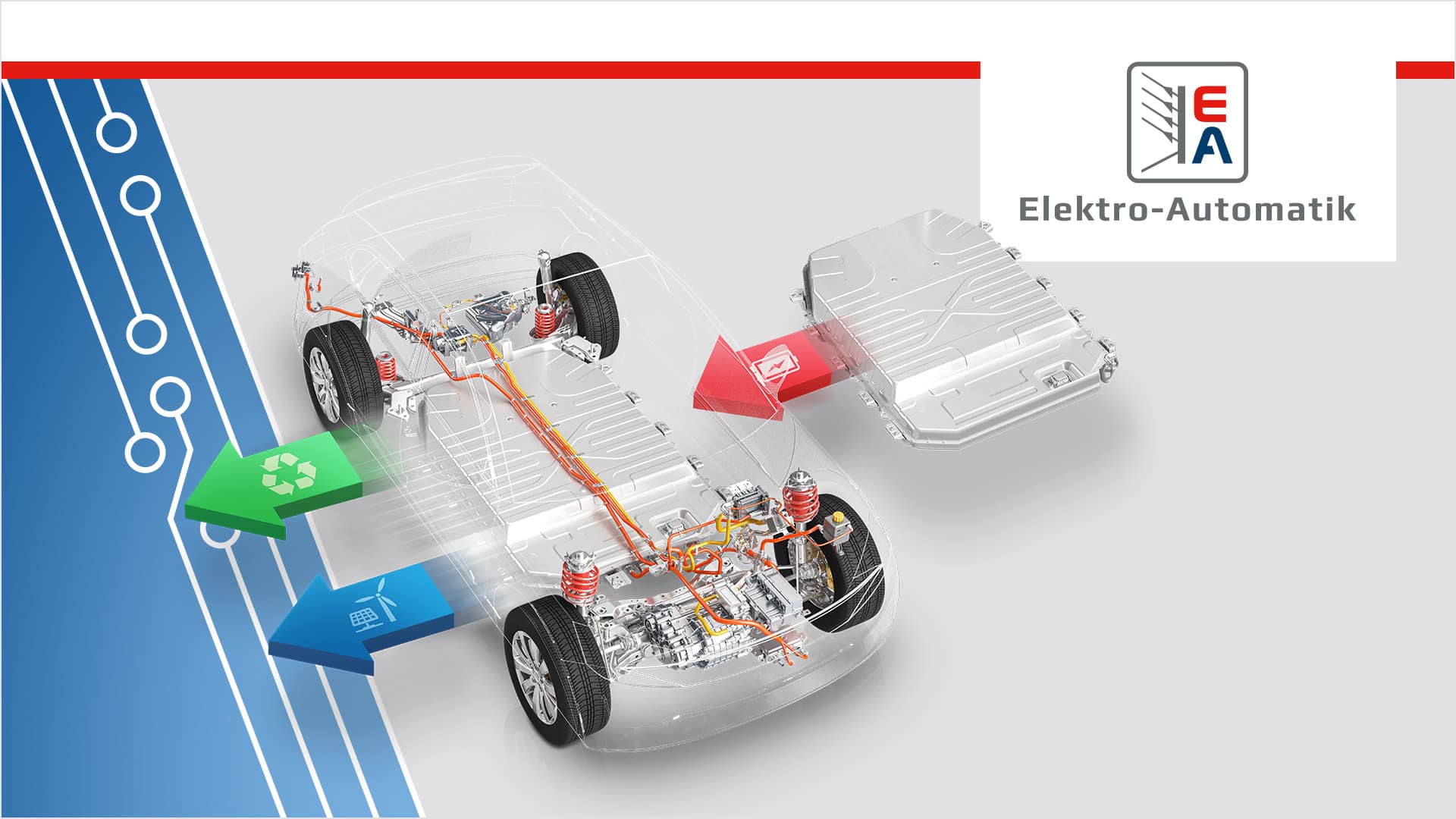Batteries are now part of everyday life. Having fueled the massive growth of mobile computing and communications, batteries are now a critical component of the green revolution. Electric vehicles and home storage systems are just a couple of examples of using batteries to store cleanly generated electricity and make that power available whenever it is needed. The reliance on batteries highlights the importance of testing and measurement to ensure systems are running at peak efficiency.
"Replacement of other battery power systems and battery life are important issues these days," says Philipp Weigell, Director of Product Management for Power Products, Meters, Sources and Audio Analyzers at Rohde & Schwarz.
During design, engineering teams need to understand whether the charging circuitry and power-consuming circuitry are all working as efficiently as possible with the battery design. Performance on the field is also important. High quality production testing is vital to ensure only high quality batteries are supplied. Those that are at risk of early failure should be identified and assigned to a reconditioning station. In the field, EV fleet managers need to be able to check whether batteries are underperforming or exhibiting trouble replacing them before they cause a failure.
As the concept of digital twins becomes more accepted, the value of these production and maintenance tests will extend into the design phase. Access to long-term operational data will show how systems perform under different load conditions. This will provide important information that engineering teams can use to optimize future system designs, as well as firmware adjustments they can make to improve the performance of equipment that is already operational.
Battery testing requires speed, accuracy and ease of use
Whether in design, production, or maintenance, speed and accuracy are some of the most important aspects of test equipment performance. The key parameters of batteries are voltage and resistance. Resistance has traditionally been measured by connecting a load to the battery. However, test companies have applied a number of sophisticated strategies to improve accuracy and ease of use, both in the laboratory and in the field, to respond to the wide variety of battery chemistries used today.
This has led to designs such as Hioki's BT3554, specially designed for servicing lead-acid batteries, often used in uninterruptible power supplies (UPS) and similar applications. The BT3554 is designed to provide complete diagnostics of the condition of lead-acid batteries even while they are connected to a device and without the need to disconnect the device. This facilitates maintenance of the UPS and reduces downtime.
Battery chemistry and test objectives play a major role in instrument design. Kai Scharrmann, Engineer and Head of Sales at Hioki Europe, says it is relatively easy to determine the health of a lead-acid battery through simple voltage measurements and internal resistance calculations. “You can tell very quickly if a battery needs to be replaced or not, and it's usually a one-frequency measurement. If you only measure one frequency, it becomes extremely difficult to judge from that single level of measurement whether a lithium-ion battery is OK or not."
In the transition to lithium-based chemistries, the battery structure plays an important role in maintenance and production testing, as well as in research and development, says Scharrmann. “One of the really important things is to make precise measurements at the cellular level. Taking measurements on a packet doesn't show anything because, if it's in series, you don't know which cell is affected. It is possible that you have perfect cells, but one is damaged. How are you going to find that damaged cell if you just measure the whole package?"
In many cases, the cells in lithium-ion batteries are arranged in a series, Scharrmann adds. “If you put it in series, you need a battery management system or a protection board. When measuring, the battery management system is also being measured. It can be done, but there's a lot more to consider than with an old conventional lead-acid battery."
Applications drive the need for greater efficiency
The performance of individual cells is becoming increasingly important for a growing number of applications. One environment that demands this level of detail is in the automotive industry, as the performance of the complete electrical system determines the range of an electric vehicle.
“Sometimes the battery cells themselves are selected. For example, in motorsports, where extracting maximum performance is crucial, the battery cells that make up the packs are entirely hand-selected. A frequency sweep is done on each cell and, based on those measurements, it is decided which ones will be put together in a bundle”, says Scharrmann.
Production and maintenance tests need good performance support and easily interpretable results, while instruments for research and development must meet the demand for accuracy, says Scharrmann. "Actually, the accuracy of the instrument can determine compliance." He points to the EPA (United States Environmental Protection Agency) requirements for determining the efficiency and range of electric vehicles as an example. “Good test and measurement equipment can really help to get certified,” he adds.
Precision is vital to developing systems that can take full advantage of the behavior of lithium-ion batteries. As efficiency increases, accuracy becomes more important. This applies to power supplies that require as little waste as possible when controlling downstream electronics, as well as inverters in larger systems used to control electric motors. Currently the efficiency is close to 90%. Even a small efficiency improvement greatly reduces wasted energy. For example, one percentage point higher efficiency means 10% less wasted energy.
Scharrmann says that significant effort is being made in the design of high-frequency inverters thanks to the advent of silicon carbide and gallium nitride processes. "Switching clock speeds are increasing so much now that you need really accurate measurement equipment to be able to measure the gains," he explains. Sustainability also plays a critical role in driving testing requirements. "Lithium-ion batteries tend to contain a lot of cobalt, which is not exactly the greenest product on the planet." Designing systems that can house batteries built with different materials can go a long way toward improving sustainability metrics.
Instruments to understand energy consumption
In low-power systems, the many types of sleep states and high-speed processing that can be used complicate battery performance analysis. Careful design of capacitor banks can help prolong battery life by reducing the size of the peak currents the cells must deliver. In addition to conventional power analyzers, Source Measurement Units (SMUs) are now used to characterize the performance of these systems.
“We are starting to see the use of SMUs in battery testing,” says Bradley Odhner, Technical Marketing Manager at Tektronix and Keithley Instruments, adding that the many startups building Internet of Things (IoT) devices can benefit from they. “SMUs are great for companies that want an instrument that can do a lot of things, but also very complex things, especially when we start talking about miniaturizing devices. People try to get the most out of all the equipment they use so they can make the best possible products.”
Weigell explains: “An SMU allows you to make very precise measurements, achieving accuracy at very low currents and in less than a second at high currents. This way you can really understand energy consumption, and then you can correlate it with other characteristics.” He adds that the flexibility of the measurements makes it easy to analyze at a granular level how power consumption and battery demands change over time, such as when a user switches from reading emails to watching videos.
From the IoT to electric vehicle fleets, batteries play a vital role. To maximize efficiency and equipment life, there is a clear need to understand how batteries perform in systems and in the field. Consequently, test and measurement equipment plays an essential role throughout its entire life cycle and the world's leading manufacturers are taking up this challenge.
By Cliff Ortmeyer, Farnell Global Head of Technical Marketing






